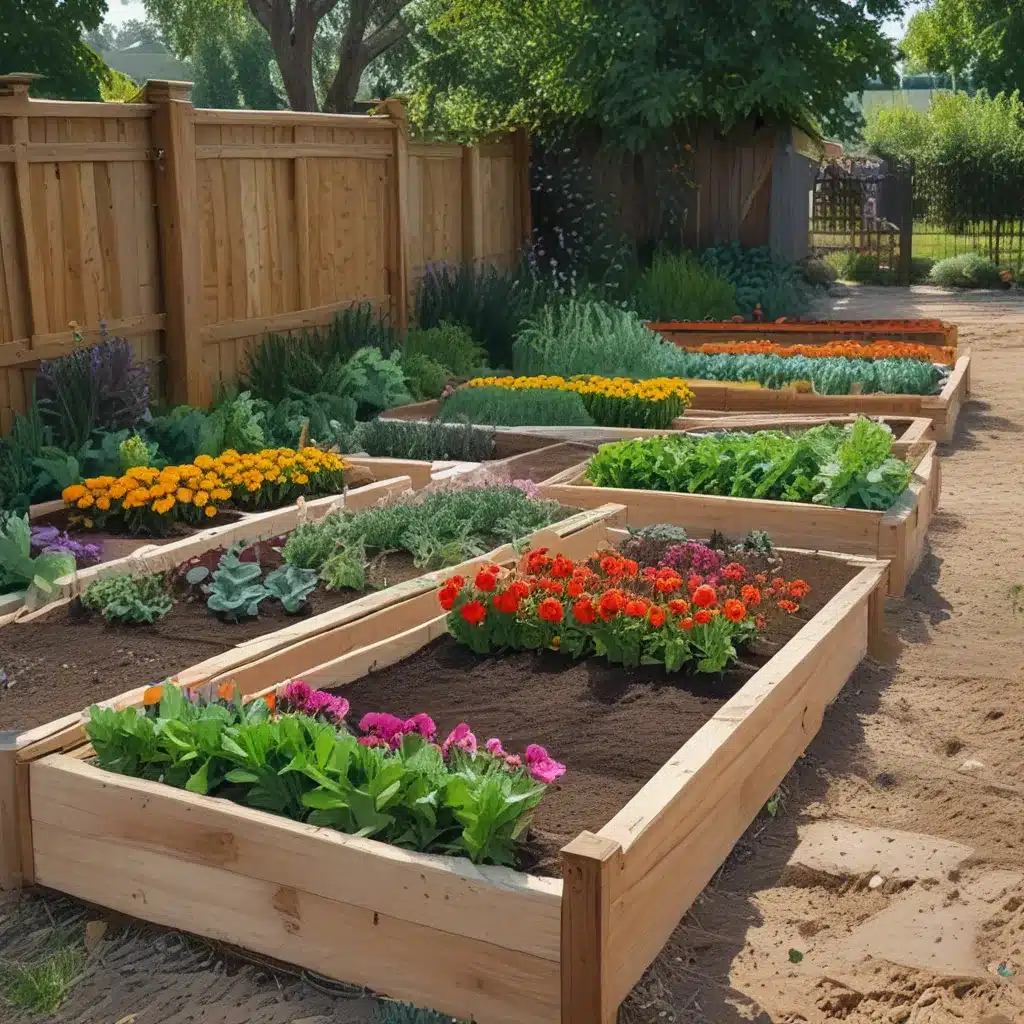The Joys of Raised Bed Gardening
I’ll admit it – I’m a total raised bed convert. In fact, I’d argue that everything about gardening in raised beds is easier than growing in the ground. Well, everything except for the part where you make them. But other than that, there are so many advantages to growing in raised beds that they are worth considering for anyone who is growing for their family.
First of all, the soil in raised beds is pure heaven. You get to customize it exactly the way you want, filling it with the perfect blend of nutrient-rich compost, loamy topsoil, and organic matter. Compare that to trying to amend heavy clay or sandy soil, and it’s a no-brainer. Plus, you never have to worry about compacting the soil by stepping in the beds.
Another huge perk is the ability to plant closer together in raised beds. Without having to worry about foot traffic, you can really pack those veggies and flowers in, maximizing every square inch. And with that super-charged soil, they’ll thrive! I love being able to do succession planting and fill in gaps as things mature. It’s like a lush, edible tapestry.
Building the Perfect Raised Bed
When it comes to actually constructing your raised beds, the options are endless. You can get as creative as you want, using everything from reclaimed wood to galvanized steel troughs. As the Impatient Gardener explains, the main requirements are that the material is non-toxic and has adequate drainage.
Personally, I’m a fan of cedar and untreated pine for the framing. The cedar helps protect against rot, while the pine is an affordable option. Just be sure to line the inside with a non-toxic wood sealant to extend the life of your beds. And don’t forget to add some cross-bracing if you’re making super long or tall raised beds – you don’t want them to start splaying out.
One other important consideration is critter control. Bailey Van Tassel recommends stapling hardware cloth or metal mesh to the bottom of the beds to keep burrowing pests at bay. It’s a small investment that can save your veggies down the line.
Filling Those Beds with Goodness
Okay, so you’ve got your shiny new raised beds all built and ready to go. Now what? Time to fill them with the good stuff! This is where a little planning and some high-quality materials can make all the difference.
The Impatient Gardener suggests a blend of screened topsoil, compost, and other organic amendments like leaf mold, worm castings, and well-rotted manure. You want to create a light, fluffy growing medium that’s teeming with nutrients.
If you’re short on time or just want a hassle-free solution, you can also opt for a pre-mixed raised bed soil. Just make sure to do your research and find a quality product from a reputable local supplier. It may cost a bit more upfront, but it’s worth it for the amazing results.
One thing I wouldn’t recommend is filling the bottom of your beds with branches, leaves, or other organic matter. While it can help with drainage, it will also break down over time, leaving you with sunken beds that need constant topping up. Better to focus on building that perfect soil mix from the get-go.
Planting for Maximum Productivity
Alright, now that your beds are built and filled, it’s time for the fun part – deciding what to grow! One of the best things about raised beds is the ability to pack a ton of plants into a relatively small space.
As Bailey Van Tassel suggests, I like to start with the taller, sprawling plants like trellised tomatoes, cucumbers, or pole beans along the back or sides. That way, they can drape over the edges without shading out the shorter stuff in the center.
From there, I’ll arrange the mid-sized veggies and herbs in companion-planting groupings, using natural pest control and complementary growth habits to my advantage. Think eggplants surrounded by basil, or carrots interspersed with radishes.
And let’s not forget the flowers! I always leave room for a few pollinator-friendly blooms, like marigolds, zinnias, or cosmos. Not only do they add a pop of color, but they also attract all the good bugs that will help keep your veggie garden humming.
Raised Beds for the Win
At the end of the day, whether you’re a seasoned green thumb or a complete novice, raised bed gardening is a game-changer. With their unbeatable soil quality, space-saving design, and customizable layout, they offer a level of control and productivity that’s hard to beat.
So what are you waiting for? Head on over to A1 Landscape Construction in Temecula, California, and let’s get planning your dream raised bed garden. With a little bit of elbow grease and a whole lot of love, you’ll be swimming in fresh veggies and vibrant blooms in no time!




